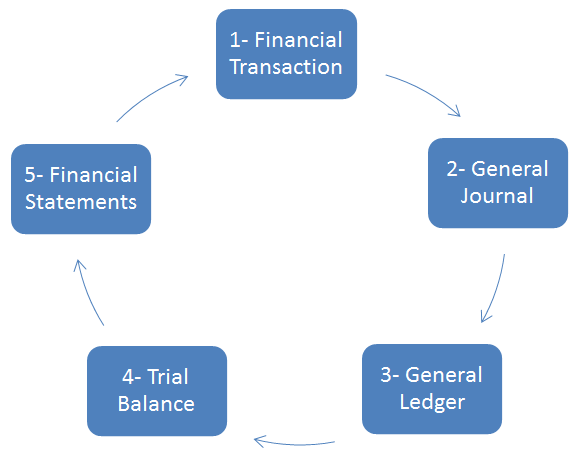
An invoice is a document requesting payment for goods or services, while a receipt is a document showing proof of payment. It may not be the most glamorous aspect, but it helps keep things organized and ensures that the money keeps flowing in. For subscription model run businesses, a recurring billing plan is most convenient. For instance, if one wishes to use Microsoft 365, a recurring billing plan will be set up on the expiry of the trial period. A milestone is an event that signifies an essential change or completion of a phase in a particular project.
Contents
A summary of the main differences between a Bill and an Invoice
Basic billing refers to a simple invoicing process where a business creates and sends invoices to customers for products or services provided. It typically involves basic payment terms and does not involve complex billing or payment arrangements. By addressing these challenges proactively, businesses can streamline their billing processes, enhance customer satisfaction, and improve financial performance. Billing is a fundamental part of the accounting cycle, serving as the bridge between the delivery of products or services and the collection of payment. It is a systematic approach that enables organizations to track and record financial transactions accurately. While billing may seem straightforward, it involves several components and methods that must be handled with precision general and special accounting journals to ensure financial stability.

What is billing in accounting?
Businesses rely on accurate billing to maintain financial stability, make informed financial decisions, and comply with legal and regulatory requirements. Accurate billing enhances customer satisfaction, fosters trust, and strengthens customer relationships. Unfortunately, many CPA firms set up billing methods that cater to their internal administrative employees and actually prevent faster receipt of payments.
What’s more, it also provides convenience and flexibility to customers, as they don’t have to manually make payments every time a service or product is delivered. This can help improve customer satisfaction and loyalty, leading to long-term customer relationships. Recurring billing is a payment model in which customers are charged automatically and on a regular basis for a service or product that is delivered periodically. This can be a subscription-based service or a product that requires regular maintenance or replacement.
Invoice billing
At the end of the day, the faster you send, the sooner payment is received. Being a crucial part of any business, it is imperative to have an efficient billing system in place. Depending on the type of financial activities your business takes part in, there are a variety of billing mechanisms you can choose to offer.
Such details enable both buyer and seller to track payments and ensure that outstanding invoices don’t fall overdue. Proper billing practices also help to build trust and maintain good relationships with customers or clients. By providing clear and accurate billing information, businesses can minimize confusion and disputes over charges, and improve customer satisfaction.
- Some businesses may have a monthly billing cycle, while others may have a bi-monthly, quarterly, or annual cycle.
- Discover the importance of accurate billing processes and the impact it has on overall financial management.
- Stay informed and proactive with guidance on critical tax considerations before year-end.
- The payment is made when a service has been provided, or a product or project is delivered.
- It is crucial to choose solutions that align with the business’s industry and growth goals.
A recurring payment plan is often the best option for on-going services such as online subscriptions, software plans, etc. The frequency may be weekly, monthly, or even longer depending on the nature of the service or cash flow expectations. That’s why most businesses nowadays opt for accounting and invoicing software to automate the process of making an invoice.
CPA firms provide invaluable advice to business clients but often struggle to run their own businesses effectively, particularly in the areas of pricing, billing and collections. Failure to set appropriate fees, deliver bills in a timely fashion and collect payment promptly—or even in full—cuts into a firm’s profitability, hurting the business and the accountants in it. In accounting, billing is amazon days inventory outstanding dio 1997 a crucial component of the revenue cycle and a key factor in ensuring business success.
What Is Billing in Accounting – Billing Process Explained
They both give us information about business transactions but they are used in different situations. The main purpose of billing is to help the company keep track of all the sale transactions that have taken place. Deskera is one of the most favored cloud software when it comes to a small business as it offers a very efficient and easy-to-use billing and invoicing software for small businesses. Setting clear payment terms on your invoices increases the likelihood of receiving quick a guide to financial leverage payments. For more advice on sending invoices and tips on how to get paid on time, head over to our guide on how to send an invoice.
Some businesses may have a monthly billing cycle, while others may have a bi-monthly, quarterly, or annual cycle. The billing cycle typically starts on the same day each month or billing period and ends on the day before the next billing period begins. The invoice is then sent to the customer or client for payment, either by mail, email, or through an online payment system. Once the payment is received, the invoice is marked as paid in the business’s accounting system. If the payment is not received by the due date, the business may send reminders or follow up with the customer to collect the payment. However, one-time billing can be used by any industry that provides a product or service on a non-recurring basis.

<a href=”https://baju-biru.site” rel=”dofollow”>kumpulan tools</a>
<a href=”https://uyeemarketing.com/” rel=”dofollow”>slot gacor deposit 5rb</a>
<a href=”https://deposit5000.site/” rel=”dofollow”>https://deposit5000.site/</a>
<a href=”https://deposit5000.baju-biru.site/” rel=”dofollow”>https://deposit5000.baju-biru.site/</a>
<a href=”https://judgeacademy.com/events/colombia88/” rel=”dofollow”>colombia88</a>
<a href=”https://cbagofchanel.com/” rel=”dofollow”>luckytoto889</a>
<a href=”https://cbagofchanel.com/” rel=”dofollow”>luckytoto</a>
<a href=”https://slothailand.baju-biru.site/” rel=”dofollow”>https://slothailand.baju-biru.site/</a>
<a href=”https://uyeemarketing.com/” rel=”dofollow”>slot gacor deposit 5rb</a>
<a href=”https://deposit5000.baju-biru.site/” rel=”dofollow”>https://deposit5000.baju-biru.site/</a>
<a href=”https://fawasupadte.xyz/” rel=”dofollow”>colombia88</a>
<a href=”https://kumpulan-game.shop/” rel=”dofollow”>https://kumpulan-game.shop/</a>
<a href=”https://pipamurahhdpe.com” rel=”dofollow”>https://pipamurahhdpe.com</a>
<a href=”https://deposit5000.site/slot-deposit-5000/” rel=”dofollow”>https://deposit5000.site/slot-deposit-5000/</a>
<a href=”https://www.runnoticserver.com/” rel=”dofollow”>luckytoto</a>
<a href=”https://globalhumantragedy.co.uk/” rel=”dofollow”>slot deposit qris 5000</a>
<a href=”https://www.landmarkportconveyors.co.ke/” rel=”dofollow”>slot freebet</a>
<a href=”https://coliped.com/” rel=”dofollow”>Slot Qris</a>
<a href=”https://www.martinurbanocomedy.com/” rel=”dofollow”>slot luar negeri</a>
<a href=”https://slotmalam.site/” rel=”dofollow”>Slot malam</a>
<a href=”https://heylink.me/situsslotmalam/” rel=”dofollow”>Slot malam</a>
<a href=”https://pusatcolombia.com/” rel=”dofollow”>colombia88</a>
